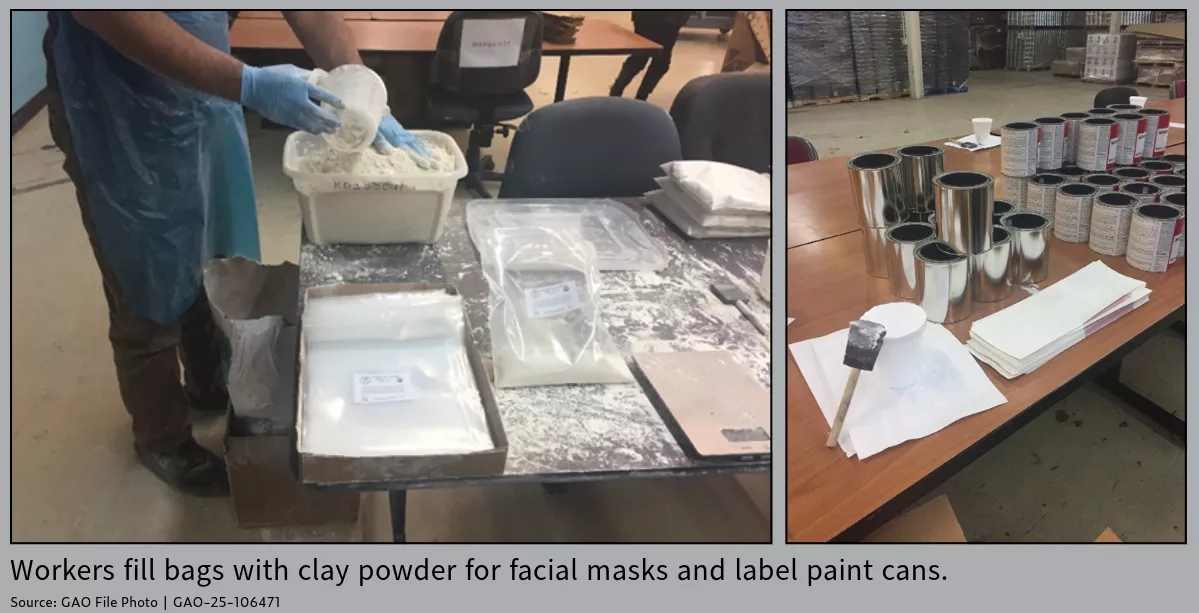Some States are Eliminating Subminimum Wages for People with Disabilities—What Does That Mean for Workers?
Last year, nearly 40,000 people were employed under subminimum wage certificates. These certificates allow employers to pay workers less than minimum wage and can create employment opportunities for people with disabilities. But in recent years, the federal government and states have placed greater emphasis on competitive, integrated employment opportunities.
Today’s WatchBlog post looks at our new report on how workers have been impacted by these changes. Our report is also available in an Easy Read format to make information more accessible.
Image

What is subminimum wage employment and why are states eliminating it?
The U.S. Department of Labor issues subminimum wage certificates to employers. Most people employed under these certificates, also known as 14(c) certificates, have intellectual or developmental disabilities. These include conditions that may result in difficulties with learning, problem solving, and the ability to acquire and use everyday life skills.
People employed under 14(c) certificates frequently work in settings like sheltered workshops, where most or all employees have disabilities and are supervised by trained personnel. Employers are often nonprofits, most of which also provide their workers with non-work services like skills training or activities to help build socialization skills.
Example of Tasks Performed Under Subminimum Wages
Image

We interviewed people who used to work in sheltered workshops for subminimum wages and their caregivers in two states (Colorado and Oregon) about their experiences. Many told us about the positive impacts the program had on workers. But others expressed negative experiences. For example:
- “I liked working with my hands in woodwork,” said a former participant, who lives in a state that ended subminimum wages.
- “A lot of the stuff that he was doing would help strengthen his hands because he has weakness on the left side,” said a caregiver.
- “He tried a couple of sheltered workshop kind of things, and they weren't very meaningful because he was more capable than what they were doing,” said another caregiver, who expressed a negative experience with the program.
In the last 10 years, 16 states have eliminated subminimum wage employment. And legislation to eliminate this type of employment nationwide has been proposed several times. Ending subminimum wage employment can be part of a shift to integrate people with disabilities into competitive work environments. In these settings, workers can earn wages at or above the federal minimum and work alongside those without disabilities.
States That Have Enacted Legislation Eliminating 14(c) Certificates as of January 2025
Image

What happened to workers after subminimum wages were eliminated?
To find answers, we looked at what happened in Colorado and Oregon—two states that eliminated subminimum wage employment. These states were collectively able to track roughly 1,000 people who transitioned out of this type of employment. Among that group:
- Less than half (39-46%) of workers had found other jobs earning at or above minimum wage.
- The remaining 54-61% were not working but continued to receive Medicaid-funded services that, for example, help build employment readiness, socialization, and daily living skills.
Both Colorado and Oregon told us they were unable to track outcomes for about 1,000 people who stopped receiving Medicaid services. These people may or may not be working, may have retired, lost Medicaid eligibility, or may no longer be living.
Workers who transitioned from subminimum wage into competitive employment expressed both positive and negative views about their new work. Some had gotten promotions or said that having an increased salary increased their financial autonomy. Others faced challenges finding suitable work, such as a job near accessible transportation or one that met caregivers’ safety concerns.
Those workers who transitioned into Medicaid-funded non-employment services and their caregivers told us they liked the classes and activities they attended. This included activities such as outings to sports events or the movies. At the same time, others faced challenges with these services, such as being put on a wait list to increase the number of days they could attend activities.
We collected more feedback from former 14(c) workers than we could include in this blog. Learn more about the 14(c) subminimum wage program and what workers told us about it by checking out our full new report. Our report is also available in an Easy Read format to make information more accessible.
- GAO’s fact-based, nonpartisan information helps Congress and federal agencies improve government. The WatchBlog lets us contextualize GAO’s work a little more for the public. Check out more of our posts at GAO.gov/blog.
- Got a comment, question? Email us at blog@gao.gov.
GAO Contacts
Related Products

GAO's mission is to provide Congress with fact-based, nonpartisan information that can help improve federal government performance and ensure accountability for the benefit of the American people. GAO launched its WatchBlog in January, 2014, as part of its continuing effort to reach its audiences—Congress and the American people—where they are currently looking for information.
The blog format allows GAO to provide a little more context about its work than it can offer on its other social media platforms. Posts will tie GAO work to current events and the news; show how GAO’s work is affecting agencies or legislation; highlight reports, testimonies, and issue areas where GAO does work; and provide information about GAO itself, among other things.
Please send any feedback on GAO's WatchBlog to blog@gao.gov.




